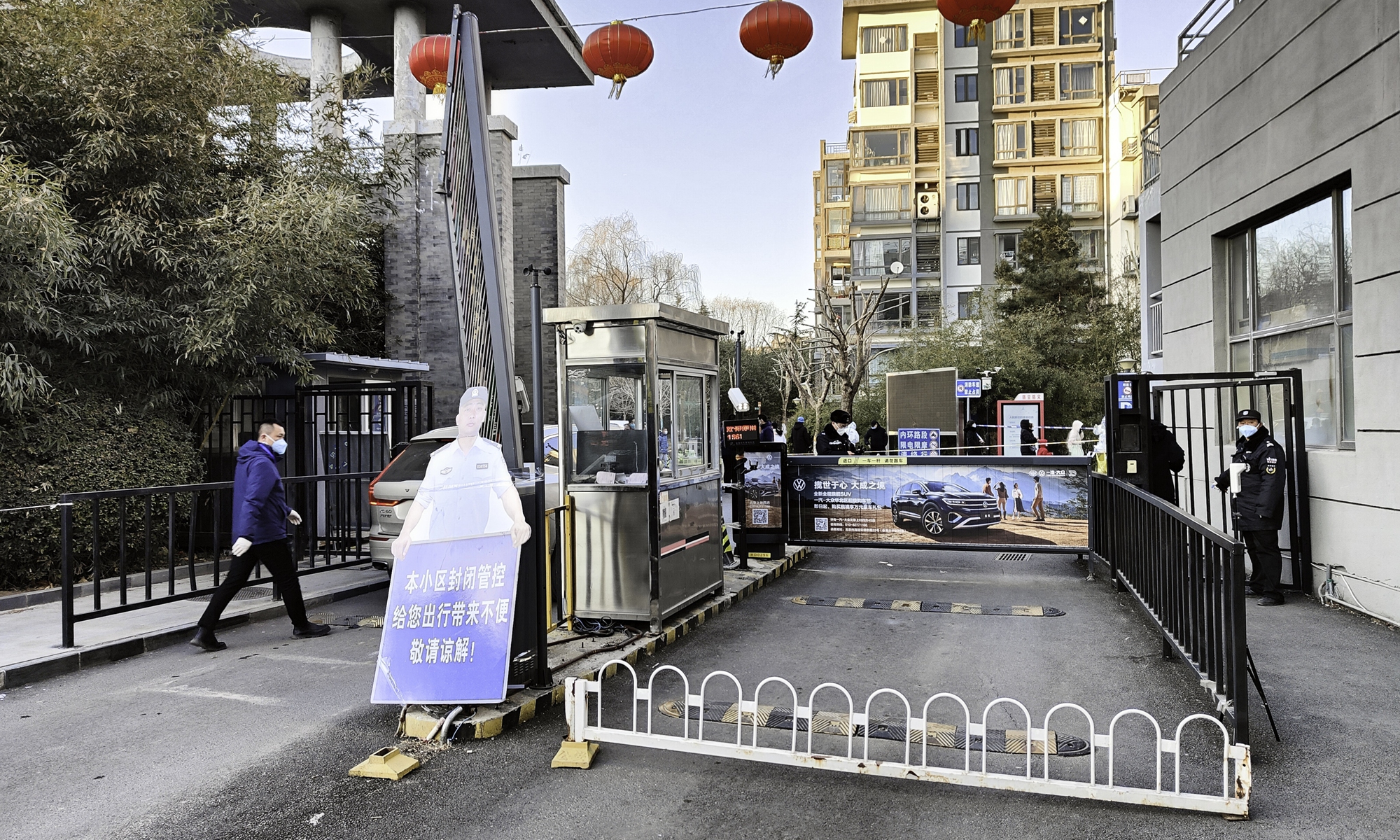
Photo:VCG
Beijing authorities confirmed that a new local COVID-19 case reported on Saturday belongs to the Omicron strain. The patient has had no contact with any confirmed cases and hasn't left the city over the last 14 days.
The infected individual lives and works in the city's Haidian district, and reportedly began to experience the onset of symptoms on Thursday before submitting to a test on Friday.
Multiple environmental samples recovered from the individual's home also tested positive. Two people living with the patient tested negative for the virus, with 15 identified close contacts being put under quarantine.
The individual had visited several entertainment venues, including shops, cafes , and a talk show event, in movements tracked since December 31, according to an official statement.
Haidian district government has sealed off the individual's residential community and place of work. Officials have conducted nucleic acid tests for key people related to either location. As of 6pm Saturday, a total of 2,430 people have been tested, with results currently pending.
Xu Hejian, a spokesperson for the Beijing municipal government said that Beijing has entered Winter Olympic time, and is facing double pressure of domestic and imported cases, while the new case reported today rings alarm bell for the city's COVID-19 prevention work.
Xu vowed Beijing will begin strictly screening people with risks arriving in Beijing, with no room for loopholes; while also requiring arrivals travelling from medium- and high-risk areas to undergo home quarantine and receive nucleic acid testing. The official also urged commuters travelling between Beijing and other places to temporarily work from home.
After the latest case was identified, officials from the Beijing municipal government, including Cai Qi, Party chief of Beijing, held a meeting, during which they emphasized the need to fast-track epidemiological work to uncover the origin of the infection, and act quickly to cut off the transmission chain.




